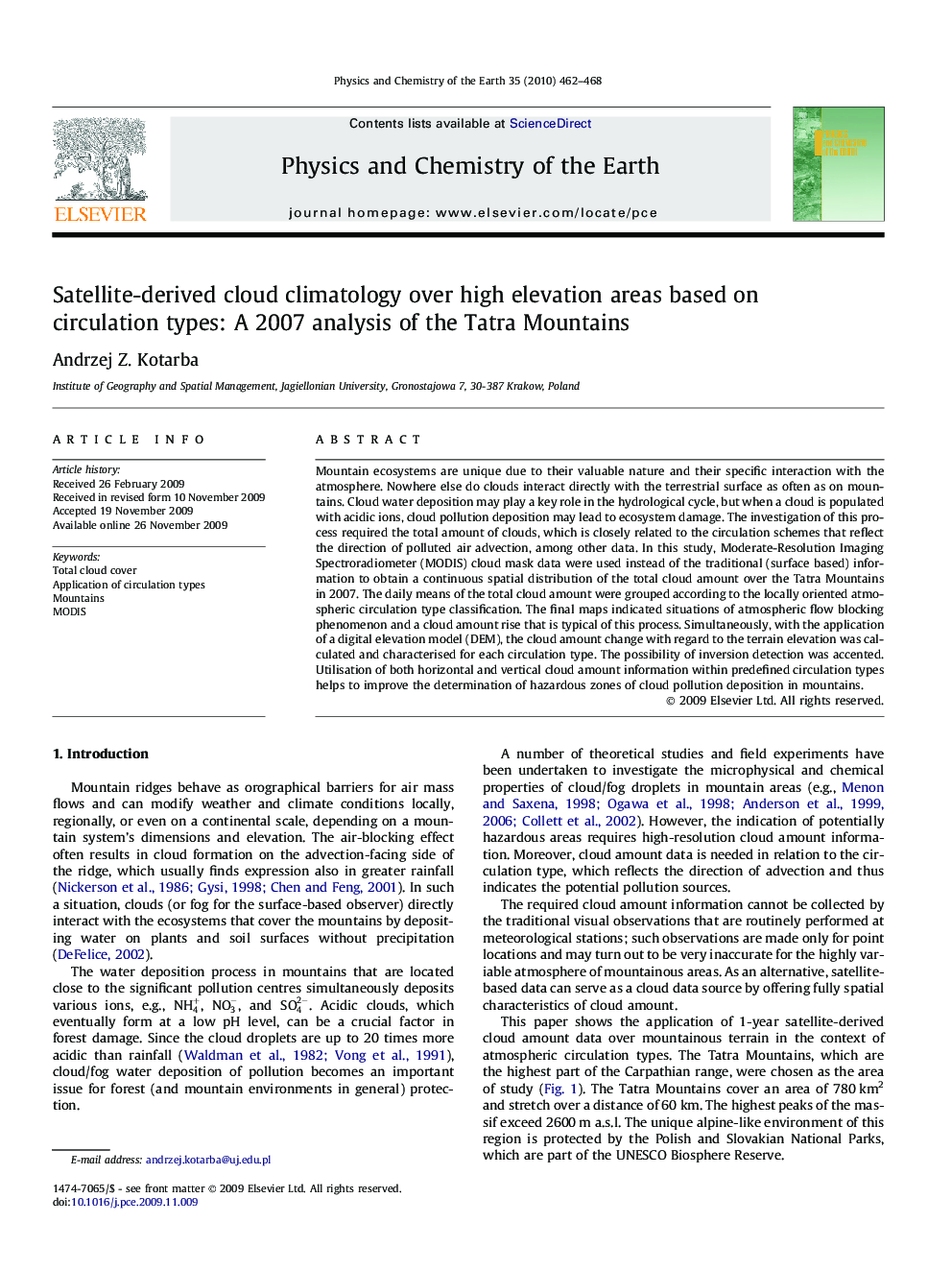| Article ID | Journal | Published Year | Pages | File Type |
|---|---|---|---|---|
| 4722008 | Physics and Chemistry of the Earth, Parts A/B/C | 2010 | 7 Pages |
Mountain ecosystems are unique due to their valuable nature and their specific interaction with the atmosphere. Nowhere else do clouds interact directly with the terrestrial surface as often as on mountains. Cloud water deposition may play a key role in the hydrological cycle, but when a cloud is populated with acidic ions, cloud pollution deposition may lead to ecosystem damage. The investigation of this process required the total amount of clouds, which is closely related to the circulation schemes that reflect the direction of polluted air advection, among other data. In this study, Moderate-Resolution Imaging Spectroradiometer (MODIS) cloud mask data were used instead of the traditional (surface based) information to obtain a continuous spatial distribution of the total cloud amount over the Tatra Mountains in 2007. The daily means of the total cloud amount were grouped according to the locally oriented atmospheric circulation type classification. The final maps indicated situations of atmospheric flow blocking phenomenon and a cloud amount rise that is typical of this process. Simultaneously, with the application of a digital elevation model (DEM), the cloud amount change with regard to the terrain elevation was calculated and characterised for each circulation type. The possibility of inversion detection was accented. Utilisation of both horizontal and vertical cloud amount information within predefined circulation types helps to improve the determination of hazardous zones of cloud pollution deposition in mountains.
